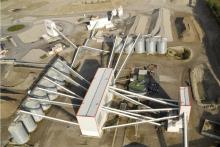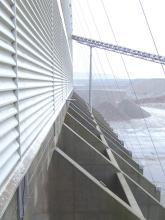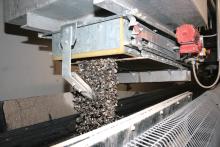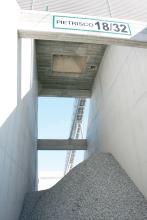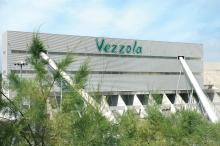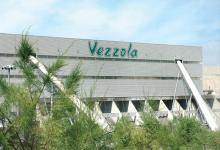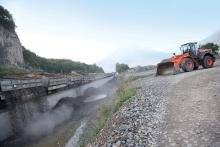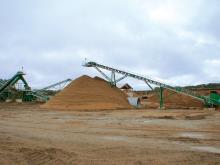
France-based Clamens was one of the first companies to recycle concrete from demolition projects. ABE takes a look at this revolutionary company
The need to recycle construction waste is almost a given these days but in the 1980s it was very much a new idea. So new in fact that Francebased
Clamens started out as a transport company for construction materials in Paris in 1954 and today it not only recycles demolition waste but also undertakes concrete sludge reprocessing.
The sludge is hazardous because of the high alkaline levels so recycling removes it from the waste stream.
Clamens was the first company in Europe to find a solution and is still the only company in France that has a permit to recycle the material. It carries out the function concrete plants operators such as
Company owner Philippe Clamens came up with the recycling solution after he realised that there was a high proportion of sand and gravel in the waste and wanted to find a way to recover these materials.
Initially, Clamens saw a huge business opportunity when he started to recycle concrete sludge. But now the environmental philosophy behind it has reached other areas of the business and changed the company's direction. "We need to move with the times, the trend is moving towards biofuel, recycling and green products," he said.
The company follows the ISO 14001 standard to reduce its impact on the environment. Its fleet of trucks often drive at night to minimise fuel consumption and optimise travel times. Drivers are taught how to drive in an environmentally friendly way. All aggregates have energy labels - similar to those of household appliances.
The company is also planning to install solar panels and wind turbines on site to provide sustainable energy. In the office, workers recycle paper and use recycled plastic. The site also has beehives, producing honey and helping to preserve biodiversity.
Clamens also applies the environmental approach to its use of construction equipment and invested in a fleet of
Recycling
According to Clamens, France recycles 63% of concrete per year. The recovered concrete from construction and demolition waste is predominantly used for road sub-bases/foundations, but it can also be used to make new concrete if it is of a high enough quality
"In 2012, all companies will need to complete efficiency ratings, so recycling and environmentally friendly practices will become increasingly important," he said. "Companies always order more concrete than they require, so there is always a surplus. When they return the excess concrete to the manufacturer, there is always concrete sludge left over. So the supply of material to be recycled will always be steady."
The company recycles 500,000tonnes of concrete sludge each year and even the water used in the process is re-used. "The process water has a high PH level so we add carbon dioxide to reduce it before it is reused to wash trucks and clean the work area," he explained. "We use 20tonnes of carbon dioxide each month, which is the equivalent absorbed by a 10ha forest."
Concrete sludge from general construction and road construction projects is delivered to the Villeparisis site by six trucks between 10pm and 5am. It is then filtered and cleaned so that the sand and gravel can be sorted into different stockpiles. The sludge is made up of 43% sand, 31% coarse gravel and 26% fine gravel, so there is no waste product from the process. The recycled aggregates, in grades of 0-4mm, 4-10mm and 10-20mm, are sold for road construction or reused to make concrete.
All the aggregates produced by Clamens have a carbon dioxide efficiency rating (the majority of which are classified as A or B).
Although the sludge recycling operation has become a major industry, recycling of concrete demolition waste is still a core activity of the company.

